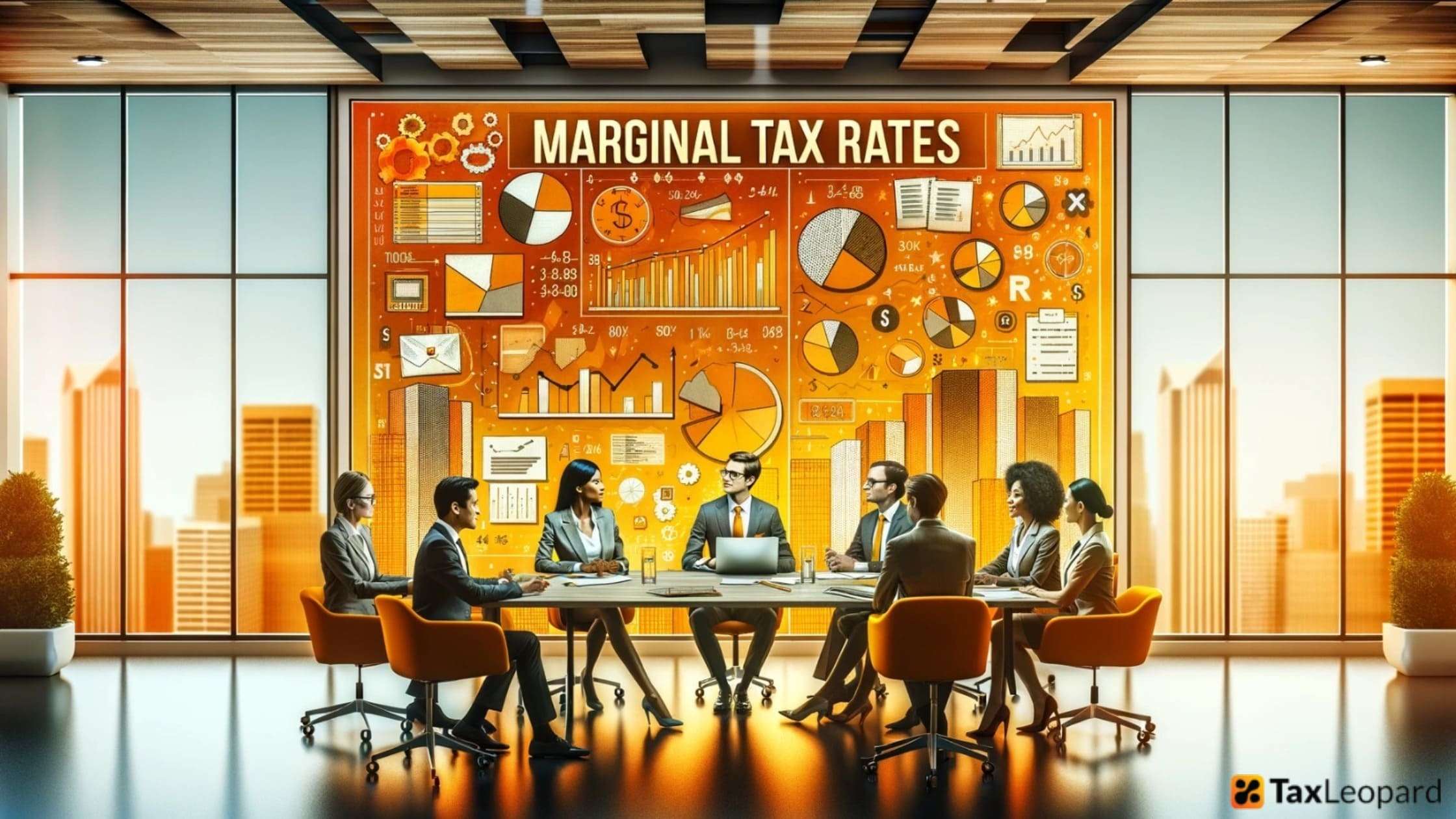Marginal tax rates are more than just a fiscal tool; they represent a fundamental concept in modern taxation systems. Their role extends beyond mere revenue collection, encompassing aspects of economic equity and fiscal policy. Understanding these rates is crucial for taxpayers and policymakers alike, as they directly influence financial decisions and broader economic trends. This guide aims to demystify marginal tax rates, offering a comprehensive view of their mechanics, implications, and real-world applications.
Importance of Marginal Tax Rates in the Tax System
Marginal tax rates are vital in shaping a fair and progressive tax system. They ensure that taxpayers with higher incomes contribute a proportionally larger share, embodying the principle of ability to pay. By using multiple tax brackets, the system avoids the one-size-fits-all approach, making taxation more equitable. This structure also plays a key role in fiscal policy, influencing consumer spending and investment decisions. Understanding this is crucial for effective tax planning and financial decision-making, both for individuals and businesses.
How Marginal Tax Rates Work
The Concept of Tax Brackets
Tax brackets are the foundation of the marginal tax system. They divide taxable income into sections, each taxed at a different rate. As income rises, only the amount within a higher bracket is taxed at that bracket’s rate, not the entire income. This method ensures a gradual increase in tax liability, aligning with the taxpayer’s ability to pay.
Calculation of Marginal Tax Rate
The marginal tax rate is the percentage applied to the last dollar earned. It’s calculated by identifying the tax bracket into which a person’s last dollar of income falls. This rate is crucial for decision-making, especially when considering additional income or deductions. It helps in forecasting the tax impact of financial decisions.
Factors Affecting Marginal Tax Rates
- Income Levels: It is the primary determinant of one’s marginal tax rate. As income increases, taxpayers move into higher tax brackets, subject to higher marginal rates. This progressive nature ensures fairness, with those earning more pay a larger share of their income in taxes.
- Filing Status: Such as single, married, or head of household, significantly affects marginal tax rates. Each status has distinct tax brackets, affecting the rate at which income is taxed. This differentiation acknowledges the varying financial responsibilities associated with each status.
- Deductions and Credits: It can lower taxable income, potentially reducing a taxpayer’s marginal tax rate. By decreasing taxable income, they might move a taxpayer into a lower tax bracket, resulting in a lower marginal rate. This highlights their importance in tax planning.
Pros and Cons of Marginal Tax Rates
Pros:
- Progressive Taxation: It embodies the principle of progressive taxation. This system ensures that individuals with higher incomes pay a higher rate on their additional income, aligning with notions of fairness and ability to pay. It helps in redistributing wealth, potentially reducing economic disparities.
- Encourages Economic Growth: By structuring higher tax rates for higher income brackets, marginal tax rates can encourage reinvestment of earnings into business activities. Lower tax rates on lower income levels also increase consumer spending, fueling economic growth.
- Flexibility in Fiscal Policy: It offers governments a tool to adjust fiscal policies based on economic needs. During economic downturns, reducing these rates can stimulate spending and investment. Conversely, increasing rates can help curb inflation during economic booms.
- Taxpayer Equity: This system acknowledges the varying financial capabilities of taxpayers. It imposes a lesser burden on those with lower incomes, ensuring that taxation does not disproportionately affect their standard of living.
Cons:
- Complexity in Tax Filing: The structure of marginal tax rates can make tax calculations and filings complex. Understanding various brackets and applicable rates can be challenging for individuals, leading to potential errors or the need for professional tax assistance.
- Potential for a Reduced Incentive to Earn More: Higher marginal tax rates on additional income may disincentivize individuals from seeking higher earnings, as a significant portion of their additional income goes to taxes.
- Tax Evasion and Avoidance: The complexity and higher rates associated with marginal tax systems can lead to increased tax evasion and avoidance strategies. Individuals and businesses might seek loopholes or use aggressive tax planning to reduce their tax liabilities.
- Administrative Burden on Government: Implementing and maintaining a marginal tax rate system requires significant administrative effort and resources. Governments must continuously update brackets, monitor compliance, and address tax avoidance schemes, which can be resource-intensive.
Planning with Marginal Tax Rates
Strategies for Individuals: Individuals can effectively plan their finances by understanding their marginal tax rate. This knowledge allows for strategic decisions about investments, deductions, and retirement planning. For instance, knowing their marginal rate helps individuals decide whether to invest in tax-deferred accounts or opt for Roth IRAs, where withdrawals are tax-free. Additionally, they can time income and deductions to maximize tax efficiency, like deferring income to a year with a lower expected rate.
Implications for Businesses: For businesses, understanding marginal tax rates is crucial for financial planning and decision-making. Companies can strategize around these rates for activities like capital investment and employee compensation. Knowledge of marginal tax brackets helps in structuring employee benefits and bonuses in a tax-efficient manner. Additionally, businesses can plan their expansion and investment strategies, considering how their marginal tax rate will affect overall profitability.
Recent Changes in Marginal Tax Rates
Legislative Amendments:
Recent years have seen significant legislative changes to rates of marginal tax. Governments often revise these rates to reflect current economic conditions and fiscal policies. For instance, amendments might aim to stimulate economic growth or address income inequality. These revisions can include adjustments in the income thresholds for different tax brackets or changes in the tax rates themselves. Such legislative changes are essential, as they directly impact the revenue generation capacity of the government and reflect broader economic strategies.
Impact on Taxpayers:
The impact of these legislative changes on taxpayers is substantial. Adjustments in rates of marginal tax can alter the amount of tax an individual or business owes. For example, a decrease in the marginal tax rate for a specific income bracket can result in significant savings for taxpayers within that bracket. Conversely, an increase can lead to higher tax liabilities. These changes not only affect personal finances but also influence investment decisions and spending behaviours, ultimately affecting the broader economy.
Also Read: Foreign Resident Tax Rates For 2023-2024 in Australia
Future of Marginal Tax Rates
Predictions and Trends:
Predictions about the future of marginal tax rates often focus on global economic trends and fiscal needs. Experts suggest that in response to increasing government debts and social welfare needs, the marginal tax might rise, particularly for higher income brackets. Additionally, there’s a growing trend toward simplifying tax systems, which could lead to more streamlined tax brackets. Technological advancements are also expected to play a role in ensuring more efficient tax collection and compliance.
Potential Reforms:
Potential reforms could include the introduction of more progressive tax structures to address income inequality. This might involve increasing tax rates for higher-income brackets while reducing them for lower-income groups. Another area of reform could be the harmonization of tax rates at a global level to prevent tax evasion and ensure a more equitable distribution of tax burdens. Such reforms would aim to balance revenue generation with economic growth and social equity.
Conclusion
Marginal tax rates are a vital component of contemporary tax systems, balancing the scales of fiscal responsibility while navigating the complexities of economic realities. They reflect a blend of economic theory and social policy, aiming to foster equity and efficiency. As we’ve explored their mechanisms, impacts, and debates, it becomes clear that these rates are more than just numbers; they are tools for shaping societies. How do you think marginal tax rates could be reformed to better serve our evolving economic landscape?
FAQs
1. What are Marginal Tax Rates?
It refers to the percentage of tax applied to an individual’s or entity’s income for each tax bracket they fall into.
2. How do Marginal Tax Rates differ from Effective Tax Rates?
While it applies to the last dollar of income within a tax bracket, effective tax rates represent the average rate of tax paid on the total income.
3. Why are they important?
They are crucial for understanding tax liabilities and planning financial strategies, and they play a significant role in economic policies and income redistribution.
4. Can it Affect Economic Behavior?
Yes, they can influence individual and corporate financial decisions, such as investment, spending, and work incentives.
5. How do these Tax Rates impact government revenue?
These rates determine the proportion of income collected as tax from different income groups, affecting the overall revenue generated for government spending and initiatives.




